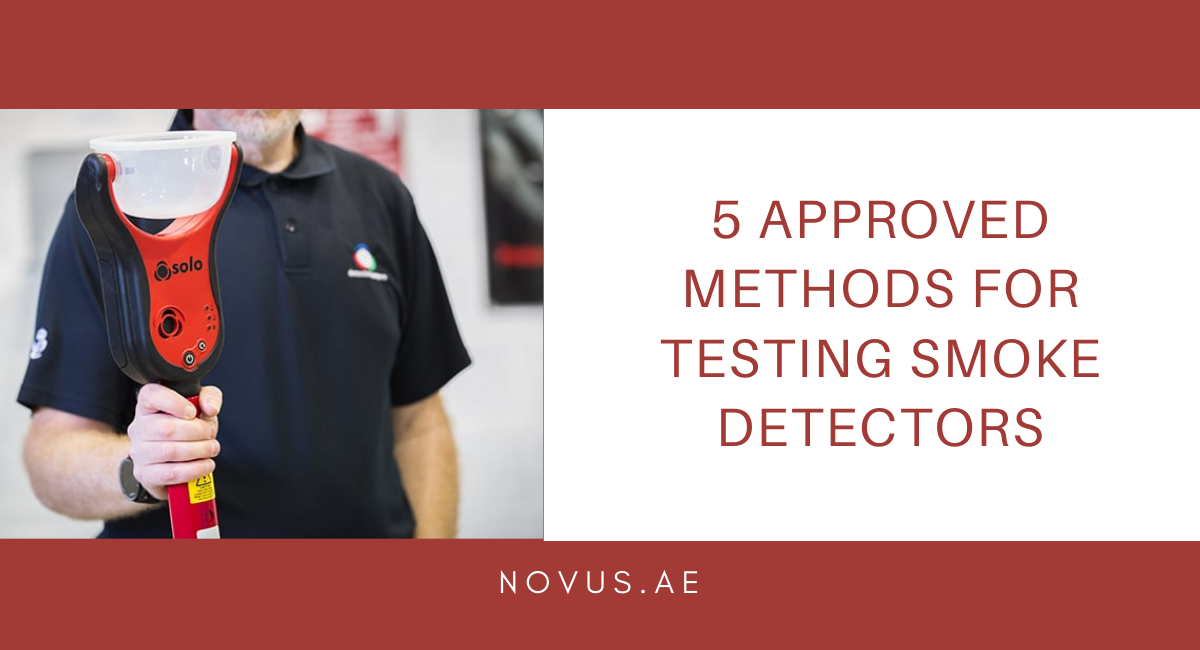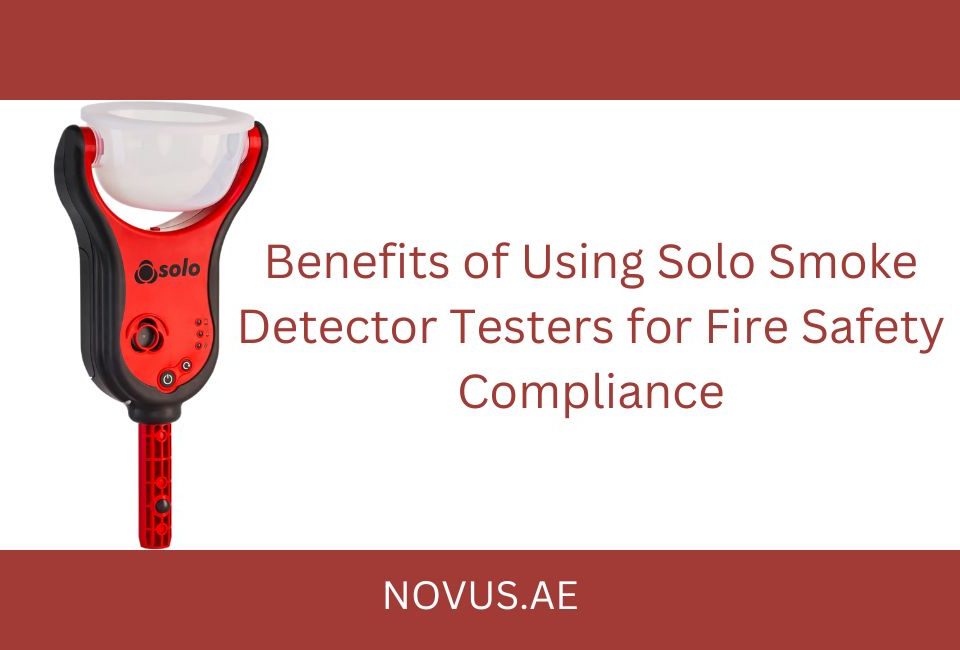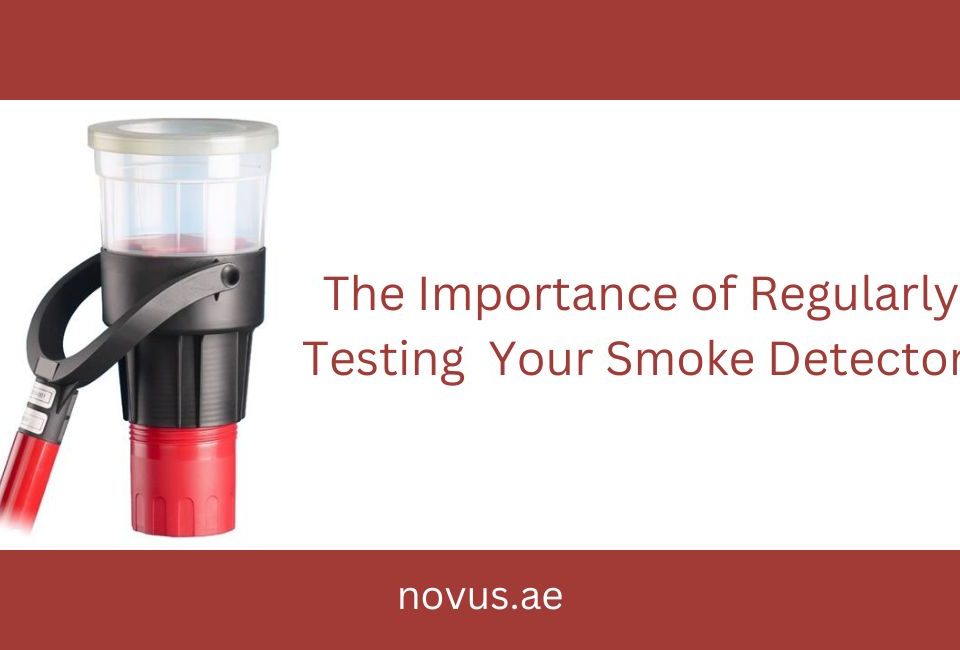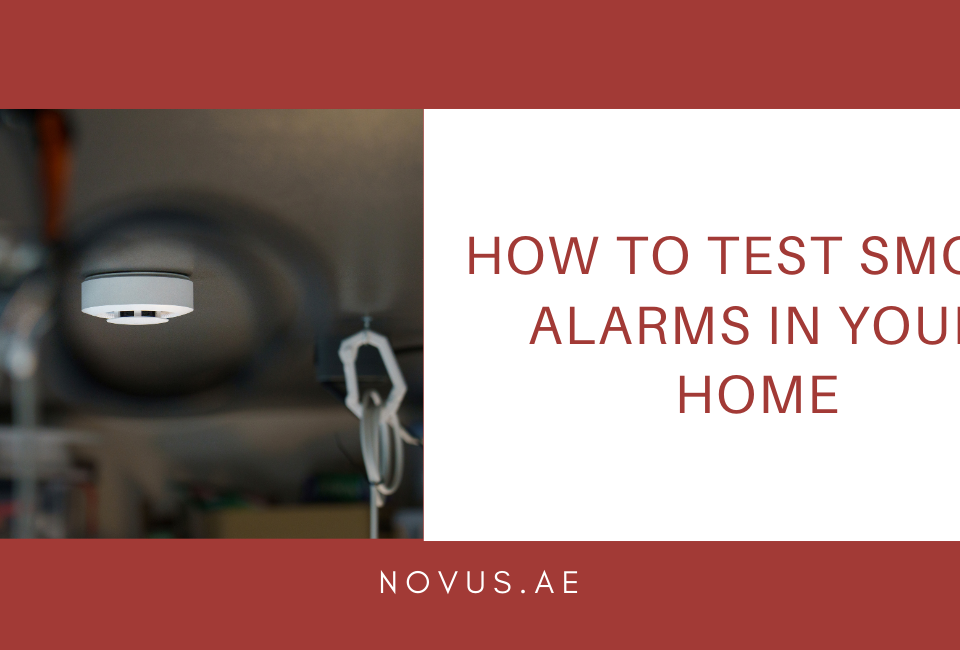- Welcome to Novus Fire and Security LLC
- +971 4 250 43 43
- +971 55 225 4256
- novusuae@eim.ae
5 Approved Methods for Testing Smoke Detectors

Tips to select the best Fire Alarm Testing Equipment
June 3, 2021
How Often Should Fire Alarms Be Tested?
March 14, 2024Smoke detectors are indispensable components of any fire safety system; their function is to alert occupants of the presence of smoke and potentially dangerous situations. But smoke detectors testers are critical to make sure that they work.
In this blog post, we discuss five safe ways to test smoke alarms. Homeowners and business owners alike can use these procedures to ensure that their fire safety measures remain robust.
Functional Testing with Test Button
The simplest and most common method of testing for smoke detectors is using the built-in test button. A test button that simulates a smoke event is standard on virtually all modern-day smoke detectors. Doing this test is simple. Just press and hold the test button for a few seconds until the alarm sounds.
This method tests the internal circuitry of the unit, its battery power, and even the sound of the alarm. However, it’s important to observe that this test verifies only the alarm components and not whether the sensor can sense smoke. For this reason, more rigorous testing methods are needed for a fuller assessment.
Smoke Test Aerosols
Smoke test aerosols are used in more comprehensive testing of smoke detectors. These specialized aerosols are created with the function of emitting a smoke-like substance so that users can mimic the condition experienced in real life which involves a real fire. With this method, the smoke detector’s responsiveness and sensitivity are more realistically assessed.
To conduct a smoke test using aerosols, follow these steps:
- Put the smoke detector in test mode if you can.
- Spray a short burst of the smoke test aerosol in front of the detector.
- See whether the smoke detector triggers the alarm within the given time.
Professional Smoke Detector Testing Kits
To perform an objective and comprehensive assessment of smoke detectors, it is recommended that professional smoke & heat testing equipment be used. These kits often feature several different tools and substances to test various aspects of the detector’s ability, such as smoke density, response time, and sensitivity.
To simulate the various fire scenarios under different weather and temperature conditions, professional testing kits may also include calibrated smoke sources, air flow meters, and other instruments. This method is especially helpful for companies and organizations with greater responsibility for fire safety compliance.
Heat Testing
Smoke detectors react mostly to the presence of smoke, but some are also fitted with heat sensors that sense large temperature increases (a common sign of fire). Heat testing requires using a heat source to examine the heat sensor’s operation.
To conduct a heat test:
- Warm the detector with a hairdryer or heat gun.
- Check if the smoke detector goes off when the temperature increases.
Kitchens, where smoke detectors are exposed to environmental conditions that may affect their performance, are one such area where heat testing plays a particularly important role.
Read More: A Guide to Fire Detector Testing
Regular Maintenance and Inspection
Regular maintenance and inspection, in addition to periodic testing, are necessary for protecting smoke detectors ‘long-term reliability. Follow these guidelines:
- Regularly clean the detectors to remove dust, debris, and other contaminants that hamper sensor functions.
- See the manufacturer’s instructions for battery check and replacement.
- Check for physical damage or wear, and replace aging detectors.
The effective operation of smoke detectors is indispensable to the safety of occupants in any sort of residential or commercial space. Using approved testing methods in combination including functional testing, smoke test aerosols, professional examining kits, heat tests, and regular retesting-homeowners can bring their fire safety up to speed and create a safe environment for all.
Not only does testing every month help ensure safety standards are complied with, but you also have the peace of mind that comes from knowing your smoke detectors will function when called upon.





